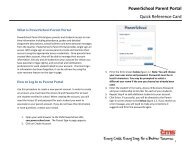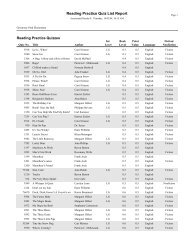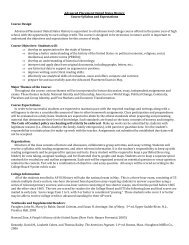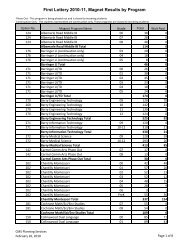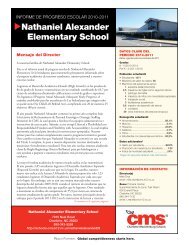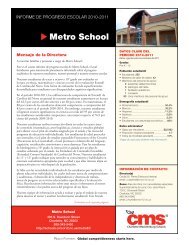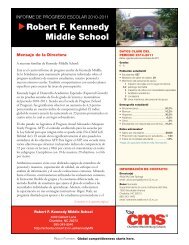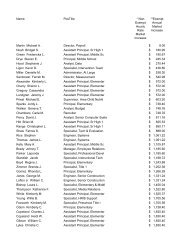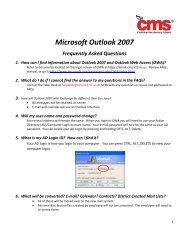2012.2014 Draft Tech Plan 3 20 12 - Charlotte-Mecklenburg Schools
2012.2014 Draft Tech Plan 3 20 12 - Charlotte-Mecklenburg Schools
2012.2014 Draft Tech Plan 3 20 12 - Charlotte-Mecklenburg Schools
Create successful ePaper yourself
Turn your PDF publications into a flip-book with our unique Google optimized e-Paper software.
Strategic Priority 3: Statewide Access to Digital Teaching and Learning<br />
Resources, Including Digital Textbooks<br />
Essential Questions<br />
What are digital teaching and learning resources? What are digital textbooks?<br />
Why do teachers and students need access to digital teaching and learning devices?<br />
What are the benefits of digital textbooks?<br />
What are open educational resources and how can they is used?<br />
How can access to these resources be increased in our LEA?<br />
Current Status and Moving Forward<br />
<strong>Charlotte</strong>-<strong>Mecklenburg</strong> <strong>Schools</strong> entire vision for 21st century learning is guided by our Strategic <strong>Plan</strong><br />
<strong>20</strong>14. www.cms.k<strong>12</strong>.nc.us/mediaroom/strategicplan<strong>20</strong>14/Pages/default.aspx<br />
Strategic <strong>Plan</strong> <strong>20</strong>14 (SP<strong>20</strong>14) serves as the foundation for instructional decisions, including technology,<br />
throughout our district. Student achievement is the keystone of the plan. Digital resources are viewed as a<br />
critical tool to enhance instruction throughout the district.<br />
Digital teaching and learning resources are as varied as instructional methodologies. Student responders,<br />
computers, tablet technology (iPad, Kindle, Nook), PCs, laptops, document cameras, interactive<br />
whiteboards, data portals, Math Forward and digital ancillaries are but a few examples of technology<br />
designed to provide a medium for more flexible differentiated instruction, student response and enhanced<br />
engagement. Digital sound, text and images are often better suited to meet the needs of diverse learners<br />
thereby reducing barriers in instruction and enhancing appropriate accommodations for some users.<br />
Digital teaching and learning devices enable the teacher and student to move beyond the fixed limitations<br />
of text and speech. Integration of technologies in instruction reflects the role of technology in students’<br />
lives. Digital natives do not view technology as a separate entity. <strong>Tech</strong>nology is common place, seamless<br />
and transparent. The natural progression of instruction reflects the use of technology to transform<br />
instruction, enhance learning and increase student success. When teachers integrate technology as part of<br />
their classroom instruction, students are empowered and become actively engaged in their learning.<br />
<strong>Tech</strong>nology integration occurs when teachers know how and when to use technology as a teaching tool to<br />
maximize student learning. <strong>Tech</strong>nology is not just an add on, it is a learning tool that, when properly<br />
integrated in instruction, allows students to access information, learn content, solve problems, analyze and<br />
synthesize information in a timely manner and ultimately present their understanding.<br />
The benefits of digital textbooks include aligning the learning styles of digital natives with instruction.<br />
Learning goes beyond physical access thereby requiring cognitive engagement through the use of<br />
appropriate, just in time technology. Updated information is continually available to students and teachers<br />
via downloads. <strong>Tech</strong>nology opens the door to accommodations for our students with special needs. For<br />
example, e-Readers or Text readers/magnifiers provide further accommodations for students.<br />
Open education resources (OER) are teaching and learning materials that are freely available online for<br />
everyone to use, whether student, parent or instructor. The materials supplement day to day instruction<br />
and may enhance the educational experience for our students. Critical evaluation of OER is key to their<br />
successful implementation. Instructional WIKIS, Edmodo and Yammer are examples of OER currently in<br />
17



